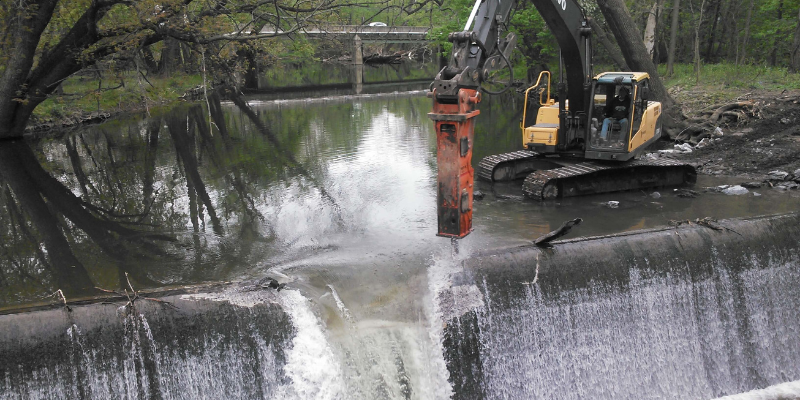Throughout the Mid-Atlantic region, and especially in Pennsylvania, relict milldams and low-head dams are coming under scrutiny as dangerous and unnecessary. Many were built over a century ago to provide power, control flooding, or create a reservoir for irrigation or recreation — but since then, they have outlived their intended purposes and often pose safety and environmental hazards. Today, with a better understanding of maintaining healthy streams, including flood control and water conservation, these dams are ripe for removal.
Dam removal brings many benefits, including improvements in water quality for local biosystems. Here’s how.
1. Restoring Natural Flow
-
- Sediment Transport – A healthy stream methodically moves and drops sediment along its bed, which helps to reduce erosion. However, behind a dam, material is trapped and builds up over time, which can lead to sediment starvation downstream and increased scouring of riverbeds and banks.
- Nutrient Cycling – Stagnant and slow-moving water behind a dam raises the levels of some elements while depleting others, an effect called eutrophication. With newly restored sediment movement, the natural flow of nutrients is returned, reversing the unwanted change in element levels that create an unhealthy environment for plants, fish, and wildlife.
2. Improving Water Temperature
-
- Dams can change the health of a waterway by trapping heat, which can adversely affect fish and plant populations. Removal allows water to flow more freely, reducing thermal pollution and helping to maintain temperatures suitable for native species.
3. Enhancing Dissolved Oxygen Levels
-
- Flowing water promotes aeration, which elevates dissolved oxygen levels in a stream. These higher oxygen levels support a wider range of aquatic life and improve overall water quality.
4. Reducing Anoxic Zones
-
- Stagnant water behind dams can create anoxic conditions (low oxygen levels) that are harmful to aquatic life. With the removal of dams, these zones are eliminated, staving off effects such as devastating algae blooms, which deplete oxygen, release toxins, and choke out sunlight from above and rob the water of needed nourishment.
5. Reducing Pollutant Accumulation
-
- Pollutants in our waterways have become a fact of life in many areas, either from old manufacturing discharge, runoff from roadways and parking surfaces, or other sources. These pollutants often accumulate in sediments behind dams. Removing a dam will help flush these materials downstream, reducing their concentration and impact on water quality.
6. Restoring Habitat
-
- Simply removing a dam doesn’t undo the damage caused by its presence. However, it does allow for the re-creation of habitats such as riffles, pools, and wetlands. Not only are these essential for different stages of aquatic organisms, but the movement of water between these habitats further helps to filter sediment and other materials that were backed up by the dam.
7. Better Water, Increased Safety
-
- There are estimated to be more than 100,000 dams in the US. Most of them no longer serve the purpose for which they were built, and they cause water quality issues such as sediment and nutrient buildup. As their age increases, so does the danger of breaches and collapse, which could cause untold damage and injury downstream. In 2023, Pennsylvania led the nation with 15 dam removals, helping to reconnect over 1,160 upstream river miles. In total, Pennsylvania has removed 390 dams, 80 of which were facilitated by Flyway. The pace for these removals will likely increase in the coming years as awareness builds.
Flyway Excavating has more than 30 years of experience in dam removal, stream restoration, wetlands restoration, and other waterway improvement projects. For more information and to get started on your project, contact us today.
